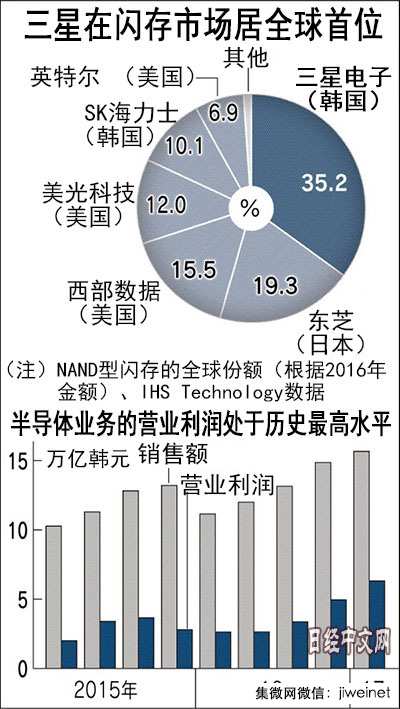[Global Technology Reporter Wang Huan] According to "Nihon Keizai Shimbun" reported on July 6, South Korea's Samsung Electronics decided to invest further in the semiconductor business. On July 4, Samsung announced that it will invest approximately 2 trillion yen in two factories in South Korea to increase the use of flash memory in terminals such as smartphones. Samsung recently finalized a large-scale investment plan in China. Under the background of Toshiba's chaos caused by operational problems, Samsung will expand its gap with competitors through huge investments and consolidate the leading position in the semiconductor field.
On July 4th, Samsung held a product delivery ceremony at the Pyeongtaek factory that was officially put into production on the outskirts of Seoul. Samsung executives emphasized that "the new challenge will start from now," and announced that it will invest an additional 1.4 trillion yen in this latest factory before 2021.

Samsung sees the plant as the latest production base of NAND-type flash memory for storage media, and will mass-produce the most advanced three-dimensional semiconductor memory that enhances performance by stereoscopically superimposing memory cells. Some analysts believe that the current production capacity of the Pyeongtaek plant is converted into wafers with a diameter of 300 mm and reaches 200,000 pieces per month. With additional investment, production capacity is expected to double by 2021. The cumulative investment is expected to reach a scale of 3 trillion yen. Samsung said that as a single production plant, "Ping Ze will reach the largest scale in the world."
At the same time, Samsung also announced that it will invest 600 billion yen in the existing Hwaseong plant. The raw product category has not yet been determined.
After spring 2017, Samsung has been strengthening its positive attitude towards the semiconductor business. In May, it finalized plans to invest approximately 1 trillion yen in the Xi’an plant in China. In addition, US$1.5 billion will be invested in a large-scale integrated circuit (LSI) plant in Texas, USA. The total investment after the spring of 2017 exceeds 3 trillion yen.
Samsung believes that the prosperity of the semiconductor business is a good opportunity to beat the competition, so it is continuing to invest actively. In terms of flash memory, the wholesale price of the indicator products rose by more than 50% from a year ago. In addition to the large-capacity flash memory used in smart phones, the data center's flash memory demand is also strong, and there are clear signs of supply shortages. Samsung Semiconductor’s operating profit for the January-March 2017 period reached 6.3 trillion won, a record high on a quarterly basis.
According to statistics from the survey company IHS Technology, in the field of flash memory, Samsung’s global share reached 35%, ranking first. The view is that in the most sophisticated "64-layer" three-dimensional semiconductor memory, Samsung's production yield is higher than that of Toshiba, which ranks the second place in terms of share. A securities analyst said, "through mass production technology, (Samsung Toshiba has opened the gap for about 1 year." In addition, Samsung plans to expand its share of Toshiba’s busy sales of memory business and accelerate the development of a new generation of “96-layer†semiconductor memory.
Pharmaceuticals,2-Methyl- Propanoic Acid Monohydrate Price,2-Methyl- Propanoic Acid Monohydrate Free Sample,Pure 2-Methyl- Propanoic Acid Monohydrate
Zhejiang Wild Wind Pharmaceutical Co., Ltd. , https://www.wild-windchem.com